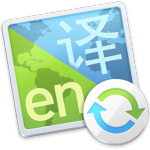El Loco Blog
12 Reasons Software Localization (L10n) Is So Dang Easy
By Kee Nethery — September 15, 2016
App translation has never been easier. I disagree with almost every single one of Oliver Bock’s premises in his recent post, “12 Reasons Why Software Localization (L10n) Is So Dang Hard.” Let’s take on his assertions one by one:
1. There’s a Lot of People in the World
Picking additional languages to add into your app is easy. If you are on a tight budget, add whatever languages your friends know. Don’t overthink it; just add languages. With an uncommon language, your app can become the big fish in a small pond. Word-of-mouth exposure in that language could rival your English-language sales. (See 5 Ways to Localize Your iOS App for Free)
2. Who Speak Thousands of Languages
3. Different Regional Dialects
The iPhone default of 40 languages lists five versions of English, two versions of French, and three versions of Spanish. You could create a translation for each variant, but why? Do the easy thing: get one French speaker, one Spanish speaker, and don’t worry about all the variations. If you are going to pay for a translator (like PhraseApp), start with the top most common languages and just keep on adding. (See Which Languages Should I Start With?)
4. Not All Languages Take up the Same Amount of Space
A long translation that gets cut off is a “text overrun” because the text has overrun the space needed to display it. German translations tend to be 150% the length of English. First thing you can do is build your app so that all your text fields are at least 150% the width of the existing English words. With that one step, odds are most translations will have ample room. Secondly, if you and your translators are using the El Loco* web interface, text overruns are highlighted to translators as they enter translations. They can immediately shorten their translations to fit the display space. The developer gets a list of phrases that are close enough to the length limit and is alerted to view them in the actual app. Being alerted to text overruns, instead of hunting for them, saves a ton of time.
5. Some Languages Read from Left to Right or Vertically
He probably meant to say “Right to Left”. Displaying Right to Left languages is typically handled by the operating system, so that’s easier than easy. Yes, there are languages that display vertically, but a Left to Right display of them is just as readable as English written vertically. And a vertical language displayed horizontally is much easier to comprehend than a language you cannot read at all.
6. Creating Strings Is Difficult
Translators normally just get a list of strings to translate, and yes, without context, doing a correct translation is difficult. Determining context from an El Loco editable web browser version of the app screens is amazingly easy. Viewing the strings in context is a solved problem.
7. There’s the Cultural Issue
Almost anyone who knows a language well enough to do translations is also going to be aware of anything offensive to the culture using that language. That is what testers are for. They should view the translations in the app, point out potential issues, and suggest alternatives. You’re never going to figure this out all by yourself; you have to have others look at your app. Just make sure you have someone from each language to test your app.
8. Lack of Unity In Programming Software
OK, I agree with Oliver on this. Localization of native iOS and Mac apps is well known and works great. Android has it figured out too. Apps built with Unity 3D or PhoneGap, not so easy. Some programming software just doesn’t have a standard way to support localization.
9. Not Everyone Supports Unicode
Unicode is pretty much everywhere now. UTF8 is the standard web format for Unicode and it just works. Most development environments support Unicode, because all major OSes support it. Dealing with Unicode is easy if you avoid systems that have not moved into the 21st century.
10. There’s a Lot of Stakeholders Involved in L10N
In the app world, you don’t need many stakeholders, and that makes it easy. The developers write the app. Testers make sure the English is correct. Translators can see the context and provide translations. The process is mostly automated. Translators convert the app store descriptions and search keywords, and that’s the big part of app marketing. Once all that is uploaded to the app store, it’s done. For apps, the company web site can stay English only. Support can be in English only. (See Supporting Your App In 13 Languages)
11. Not Everyone Is a Translator
12. Not Everyone Is a Programmer
Certainly, machines are not good translators (yet). Humans are poor translators if they don’t have visual context. With visual context and instant feedback on text overruns, almost anyone who is a native speaker can provide a quality translation for an app.
This is especially true when the translator can quickly ask the developer to clarify something that even the context doesn’t answer. For example, “Is ‘Display’ a noun or a verb?” When the question concerns the string on the screen in the language, which both the developer and the translator can see together quickly, accurate translation is much easier. It’s way easier to get an app translated when all the non-programming stuff that programmers used to have to do is automated. Automation eliminates entire classes of work and potential sources for error. Makes app localization easy.
* The Takeaway
I’m the CEO of El Loco. Our goal is to automate iOS app localization to eliminate or drastically minimize the possibility for errors. We work with all translators, including PhraseApp. Without El Loco, all the “dang hard” stuff is true. With El Loco, localization is insanely easy. It doesn’t have to be “dang hard” any more.
